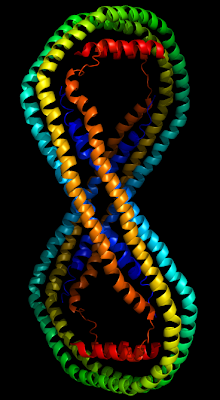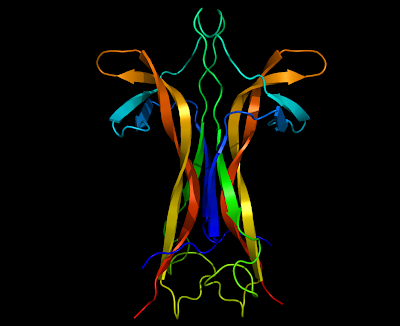
The structure of truncated human apolipoprotein A-I (PDB code 1AV1) is the major protein component of high density lipoprotein. High-density lipoprotein (HDL) is one of the five major groups of lipoproteins which, in order of sizes, largest to smallest, are chylomicrons, VLDL, IDL, LDL and HDL, which enable lipids like cholesterol and triglycerides to be transported within the blood stream.
The molecule consists almost entirely of a pseudo-continuous, amphipathic alpha-helix that is punctuated by kinks at regularly spaced proline residues; it adopts a shape similar to a horseshoe of dimensions 12.5 x 8.0 x 4.0 nanometers. Four molecules in the asymmetric unitassociate via their hydrophobic faces to form an antiparallel four-helix bundle with an elliptical ring shape.













